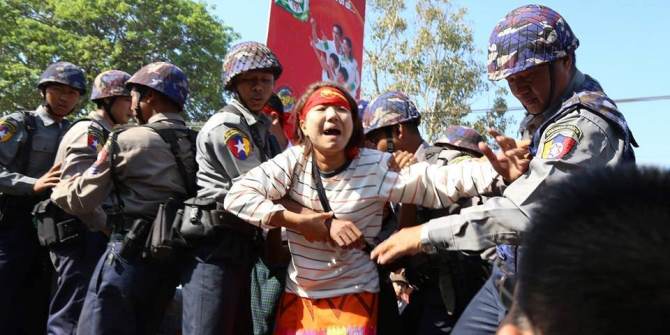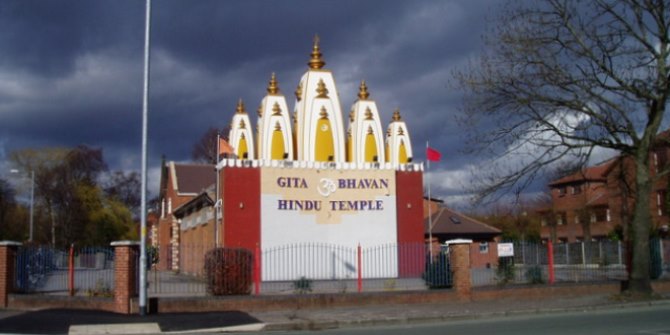Sujit Sivasundaram highlights the entanglements between the kingdom of Kandy and the colonial state and argues that the British colonial project in Sri Lanka was framed by the island’s traditions.
European early modern empires in South Asia are sometimes described as water-borne parasites: they command the sea, but only take up small stretches of territory and factories along the coasts. In such a picture, the British win out against their European rivals at sea, and then start forming alliances with South Asian states; they work closely with land-based Indian financiers and merchants and protect the rights of landowners. It is from this ground of mutual interest that British conquest takes shape. By picking up the context of Sri Lanka – placed in the middle of the Indian Ocean and at the subcontinent’s extreme tip – my research aims to challenge this narrative. It takes issue with a series of opposites that are fundamental to the way we think about the British invasion of the subcontinent. Amongst these opposites are: the pre-colonial kingdom versus the colonial state, the indigenous versus the foreign, the maritime versus the landed, and the highland versus the coastal.
The origins of these dichotomies lie in the colonial period. In the interior highlands of the island stood the kingdom of Kandy, which only fell to the British in 1815. In the words of a mid-nineteenth century historian of Ceylon, the Kandyan kingdom was protected by a ‘species of natural circular fortification’, which allowed the Kandyans to defy European modes of warfare for three centuries. Writing in 1841, Lieutenant De Butts noted that the ‘physiognomy of mountaineers is influenced by the bold scenery amid which they reside, and which is supposed to impart somewhat of hardiesse to their manners and aspect.’ This physiognomic difference was said to map on to a divergence in character, evident in the ‘servility’ and ‘effeminate’ nature of the lowlanders, which contrasted with the elevated manliness of the highlanders. In a popular commentary, Robert Percival wrote of how Europeans who were brought into contact with the climate of Kandy fell ill with debilitating ‘hill or jungle fever.’ Added to this was the trope of the oriental despot, which was quickly attached to the last king of Kandy, Sri Vickrama Rajasimha, by the British. One tale that the British publicised was how the king allegedly slaughtered the family of a fleeing minister, Ahalepola, by ordering the heads of Ahalepola’s children to be put into a mortar and pounded with a pestle by their mother.
How should these notions of opposition – weighted with a colonial politics – be displaced at long last? In my new book “Islanded: Britain, Sri Lanka and the Bounds of an Indian Ocean Colony”, I argue that there was an evocative similarity between the kingdom of Kandy and the colonial state. Unlike any of the European powers who preceded them, the British could be seen to stand in the lineage of Buddhist kings because they took into captivity the last king of Kandy and into possession the Tooth Relic of the Buddha, as the sacred signifier of their right to rule. Another way in which extant traditions of rule and colonial ones were entangled was around the notion of the island as a unit of governance. The Kandyan kings believed that the island was a territory specially sanctified by the Buddha, who had appeared magically three times on the island after his enlightenment. There was a way of referring to the entire island—as Tri Simhala. When the British took over Kandy their convention announced: ‘The religion of Boodhoo, professed by the chiefs and inhabitants of these provinces is declared inviolable, and its rights, ministers, and places of worship are to be maintained and protected.’
Yet this is not an argument for simple continuities: for the indigenous and the foreign were mutating in definitional terms as the British took over. The British recycled and redefined the laws, religious customs, languages and ethnic affiliations of the island. Unlike India, Ceylon was a Crown colony, and initially, a garrison state under military Governors. This is important, because the rivalry between the Company in India and Crown in Ceylon meant that in governmental terms, the island was cast off from the mainland by the 1830s. It became a separable island colony, and there was a concerted attempt to dredge a channel between the island and the mainland to prevent Company vessels from needing to go around the island in travelling between Bombay and Calcutta.
The apparatus through which Ceylon was unified under a centralised regime of what was expressly declared as ‘colonialism’ amongst Indian observers, set in sway a discursive and intellectual way of thinking and writing of this space as a romanticised and sexualised island, a lost Eden, and a place which was very different to the barren and Hindu mainland. The island’s Buddhism was seen to hold a key to the mainland’s past, but this religious system was seen to have lessened the force of some of the norms of society in India, such as caste or gender oppression.
What emerges to view then is the dynamism of the advent of colonialism – not as a movement from the timeless to the newly rigid, nor as a story of borrowed inheritances or radical ruptures – but as a process with a great deal of energy. Colonialism’s long-term consequences come out of its ability to both accommodate itself to and shape the difference between localities whilst connecting the uneven past to the newly present.
Dr Sujit Sivasundaram is a lecturer in World and Imperial History Since 1500 at the University of Cambridge. He recently won the Philip Leverhulme Prize for History, awarded to academics for contributions to research. He was previously a lecturer at LSE’s Department of International History.







